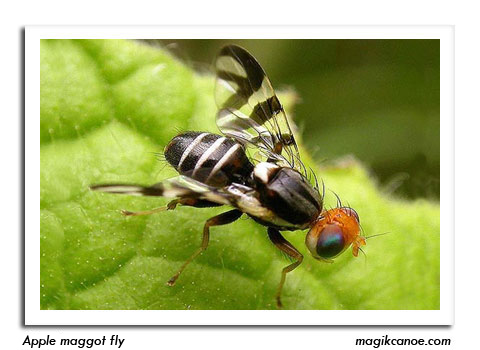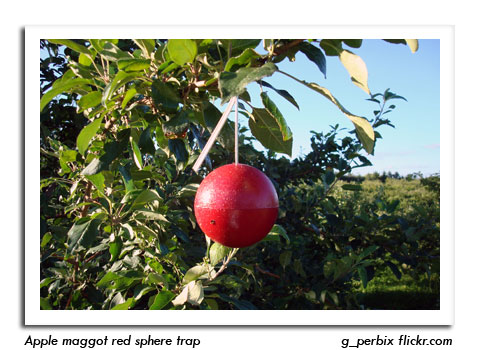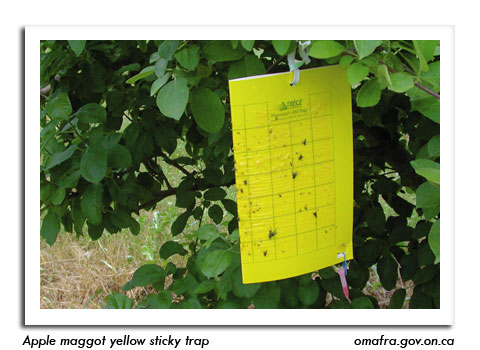
 |
|
|
Fruits
Volume 58 Number 9 Date 06/27/2013 ROSE CHAFER - This vineyard and orchard pest is emerging and may soon skeletonize grape leaves and consume developing fruit clusters in Wisconsin vineyards. Biweekly scouting is advised as soon as the first beetle is observed for vineyards in sandy areas of the state and those with past rose chafer problems. Although no formal economic threshold has been developed, an average of two beetles per vine has been suggested as the basis for initiating controls. If chemical intervention is required during the 3- to 4-week adult emergence period, systemic soil drench insecticides are usually most effective. Commercially available traps attract more beetles from surrounding areas and are not recommended for use in vineyards. SPOTTED TENTIFORM LEAFMINER - The second flight began this week, with pheromone trap counts ranging from 3-891 per trap. The peak in moth activity should occur by July 10 throughout most of southern Wisconsin and a week or more later in the southeast, central and northern areas. Apple orchards with populations greater than one mine per leaf or a history of infestation are candidates for control of second generation leafminer larvae. APPLE MAGGOT - Degree day accumulations in south-central and southwestern Wisconsin are appropriate for fly emergence. Red sphere and yellow sticky traps should be placed now to detect the first adults of the season. Apple maggot sprays are most effective when applied 7-10 days after the first fly has emerged, with later applications following at 10- to 14-day intervals as long as flies are collecting on traps. The treatment threshold is five flies per trap per week for traps enhanced with an ammonia attractant and one fly per trap per week for unenhanced traps. CODLING MOTH - The spring flight accelerated in some orchards and slowed in others. Twelve of the 31 monitoring locations registered an increase in moth counts from June 20-26, while 19 sites reported fewer moths. Apple growers should be aware that larvicides applied before heavy rains began on June 21 are unlikely to provide adequate protection against first brood larvae entering fruit and may need to be reapplied, particularly in areas that received two or more inches of rain. Scouting fruits for tiny, circular entry wounds is recommended in the week ahead. -- Krista Hamilton, DATCP Entomologist 




|
|
|